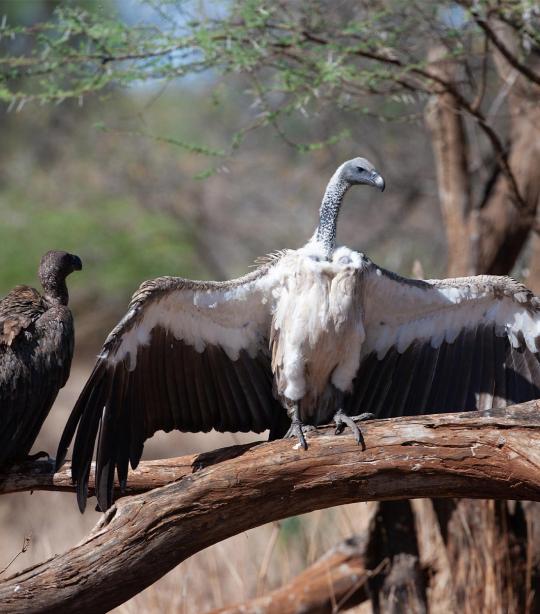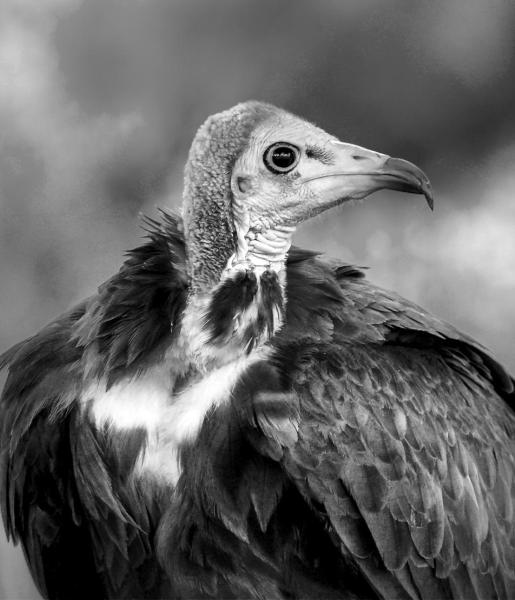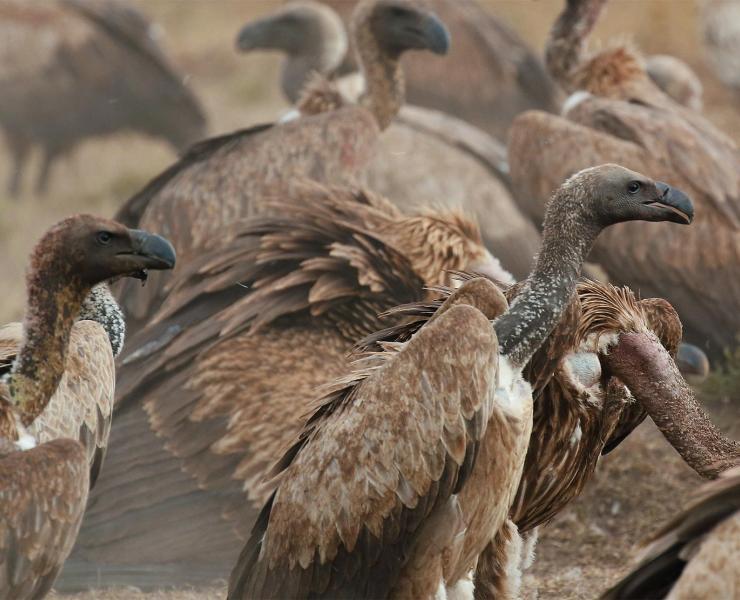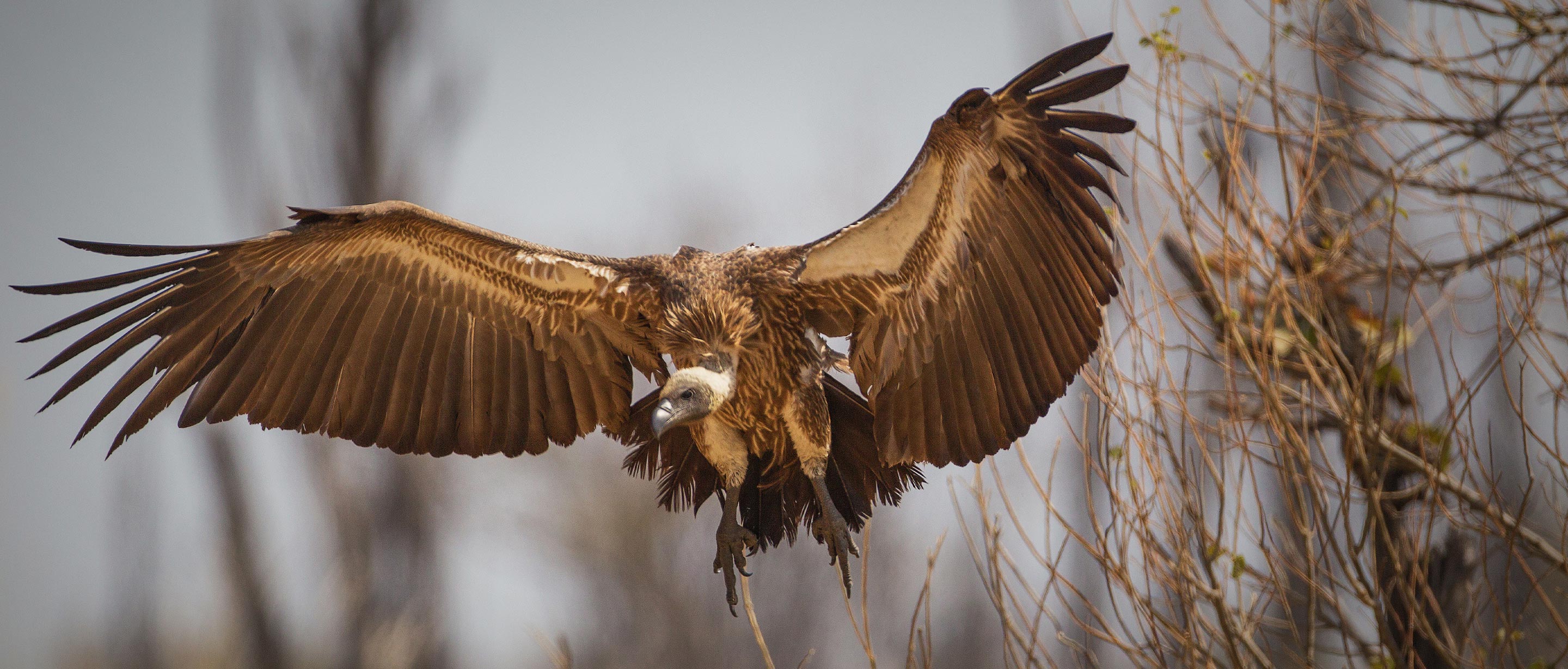What is a vulture?
Vultures vary in size and appearance depending on their species. Colors range from white to brown to black with white accents, and many species have a bare crown, face and neck, accompanied by a neat or scraggly ruff of feathers.
The IUCN Red List identifies two species, the Egyptian vulture and the lappet-faced vulture, as endangered. Four species are critically endangered: the hooded vulture, the white-headed vulture, Rüppell's vulture, and the white-backed vulture.
Egyptian Vulture: Neophron percnopterus; Hooded Vulture: Necrosyrtes monachus; White-backed Vulture: Gyps africanus; Rüppell’s Vulture: Gyps reuppelli
1.5 to 11 kilograms (3 to 24 pounds)
58 to 115 centimeters tall (22 to 45 inches)
Up to 20 years in the wild; up to 37 in captivity
Mountains, savanna, woodlands, desert
Mostly carnivorous
30 to 50 days
Humans

Challenges
Poachers are poisoning these precious birds.
As the birds flock to animal carcasses, they also give away sites of poachers’ activities. Wanting to remain undetected, poachers have turned their sights on vultures too. What’s more, they are increasingly targeted for their heads, which are widely used in traditional medicine.
Unsustainable development is depriving vultures of food and habitat.
As humans expand their communities and agricultural lands, new problems arise for vultures. New infrastructure, like power lines, presents myriad hazardous obstacles for these birds during flight. Meanwhile, agricultural expansion is pushing ungulates out of the bird’s territory, reducing the amount of carrion available to these scavengers.
Solutions
Our solutions to protecting and conserving vultures:
We are educating communities on the ecological and economic benefits of wildlife. We are also working with communities to set aside protected land for wildlife conservancies.
AWF recruits, trains and equips scouts who protect wildlife from poachers. Wildlife scouts are familiar with landscapes, wildlife and community members. As insiders, they are able to quickly identify any suspicious activity. They monitor ecosystems and work with local authorities, like Kenya Wildlife Service (KWS), to help them apprehend poachers and even identify would-be poachers.


Behaviors
Vultures keep the environment healthy.
Vultures clear up to 70 percent of all the carrion in their ecosystem. By preventing the spread of disease from these carcasses, they help protect other species, including humans and their livestock.
Diet
Vultures have got all the right tools.
Unique adaptations make these birds some of the most successful scavengers in Africa. Soaring on updrafts allows them to cover great distances, while strong eyesight enables them to easily detect potential meals. Low pH levels in their stomachs help digest rotting meat quickly and without issue.
Species specialization prevents vultures squabbling over food.
While several species of the vulture rely almost exclusively on carrion for sustenance, others, like the Egyptian, lappet-faced and white-headed vulture, are known to hunt fish, reptiles and small mammals. The palmnut vulture even eats fruit!
For those species that do dine on carrion, specialized beaks and behaviors equip them to eat different parts of a carcass, reducing competition for food. For example, bone makes up roughly 85 percent of a bearded vulture’s diet. To get to the nutritious marrow, these birds use their strong beaks to crack open small bones and carry large bones up into the sky, dropping them on rocks below to break them open.
Habitats
Where do vultures live?
With such a variety of vulture species in Africa, these birds can be found in most kinds of habitats. In wooded areas, you’ll find white-backed, palmnut and white-headed vultures; while in arid, semi-desert regions you’ll see Rüppell’s, lappet-faced and hooded vultures. Cape vultures and bearded vultures, meanwhile, can be found in more mountainous areas.



